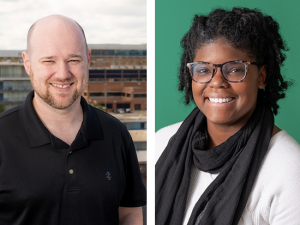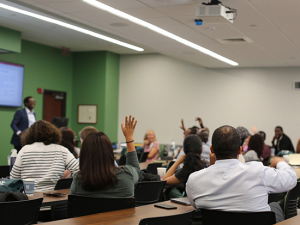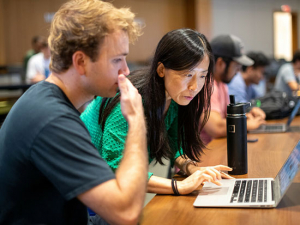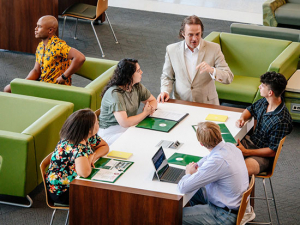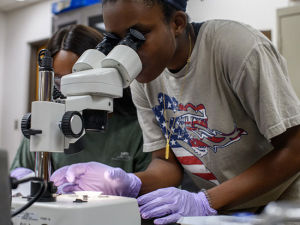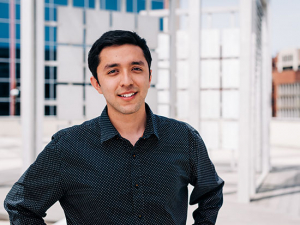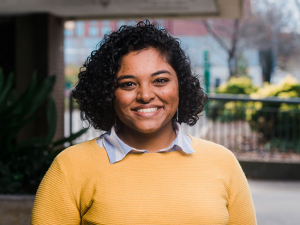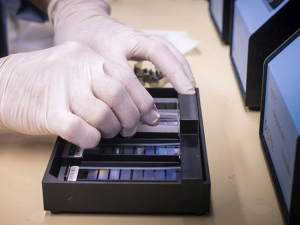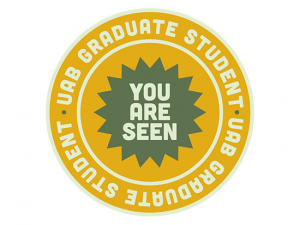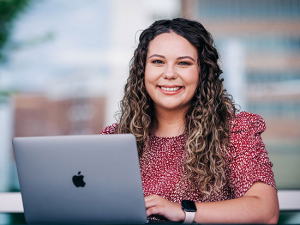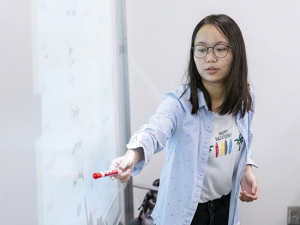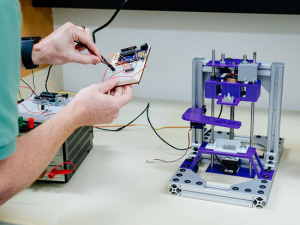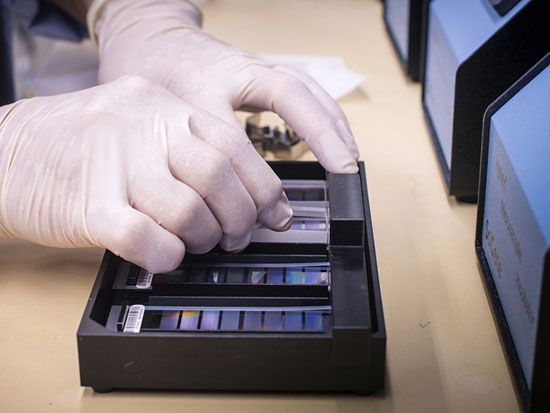 UAB medical students can learn the latest in precision medicine and medical entrepreneurship through two new co-enrolled courses offered by faculty in the Department of Biomedical Engineering. STEVE WOOD | University RelationsIn fall 2021, the Department of Biomedical Engineering piloted courses in Gene Editing and Engineering and in Biomedical Device Design and Commercialization for medical students. In the spring 2022 semester, two new courses will debut: Precision Medicine and Entrepreneurship in Medicine. Biomedical engineering is a joint department of the School of Engineering and the School of Medicine.
UAB medical students can learn the latest in precision medicine and medical entrepreneurship through two new co-enrolled courses offered by faculty in the Department of Biomedical Engineering. STEVE WOOD | University RelationsIn fall 2021, the Department of Biomedical Engineering piloted courses in Gene Editing and Engineering and in Biomedical Device Design and Commercialization for medical students. In the spring 2022 semester, two new courses will debut: Precision Medicine and Entrepreneurship in Medicine. Biomedical engineering is a joint department of the School of Engineering and the School of Medicine.
“Both the BME co-enrolled courses that were offered in fall were extremely well received,” said Palaniappan Sethu, Ph.D., professor of medicine and biomedical engineering at UAB, who led the development of the new courses in partnership with Mike Belue, program manager in the School of Medicine’s Office of Undergraduate Medical Education.
“It was a good learning experience to see how engineers approach problems and what the process of developing a medical device entails,” said third-year medical student Joseph Willis, who enrolled in the Biomedical Device Design course. He and a team of fellow students developed a prototype of a new knee brace design to prevent post-surgical complications, based on conversations with an orthopedic surgeon on the UAB faculty. Although he was a biomedical engineering major as an undergraduate, his teammates did not have that background, Willis said, “and we all felt like the class set us up to speak the language and track better with engineers as we discuss problems and work toward solutions.”
There are a handful of programs at other medical schools that aim to teach physicians to collaborate with biomedical engineers, but they tend to require lengthy time commitments. The 10-week co-enrolled course at UAB offers a new paradigm, and Willis and his classmates, along with course instructor Alan Eberhardt, Ph.D., are now working on a case study of the experience for publication in a journal.
The course experience also gives Willis and his classmates an additional talking point as they are applying for residencies next year. “It speaks to how we are trying to be forward-looking and problem-solvers in the medical field,” Willis said.
This is the reasoning behind all the co-enrolled courses, Sethu said: “Today’s medical students are graduating into a rapidly changing health care environment, where technology and innovation play a bigger role than ever. These courses give UAB medical students the chance to gain a deeper understanding of new technologies and learn how they can contribute to commercializing new ideas and inventions.”
The Entrepreneurship in Medicine course will be taught by Professor Ho-Wook Jun, Ph.D., who is himself co-founder and chief scientific officer of the UAB spinoff company Endomimetics, which is developing new types of coatings for cardiovascular stents and other medical implants.
The Precision Medicine course will be taught by Associate Professor Prasanna Krishnamurthy, Ph.D., who studies novel therapeutic approaches for prevention and treatment of cardiovascular disease complications in his lab. The course will teach students about “the tools that are available to practice precision medicine, such as next-generation sequencing and CRISPR to edit the genome of an individual,” Krishnamurthy said. “Then we will examine how you would use the data generated by those tools and apply precise therapeutics for that individual.”
Krishnamurthy’s interest in precision medicine comes from personal as well as professional experience. His family member has an autoimmune condition in which the body’s immune system attacks one’s own healthy cells. The commonly available therapies were not working, and Krishnamurthy realized that genetic screening could both identify why and point to alternative therapies. In the Precision Medicine course, students will hear from faculty experts and discuss case studies of precision medicine in action in the clinic.
“Precision medicine also comes with ethical and privacy issues,” Krishnamurthy added. “If you are scanned, that genetic information will be on a server, which could lead to concerns related to data privacy and health care access. We will discuss these issues and ways to mitigate them.”
 Related story
Related story